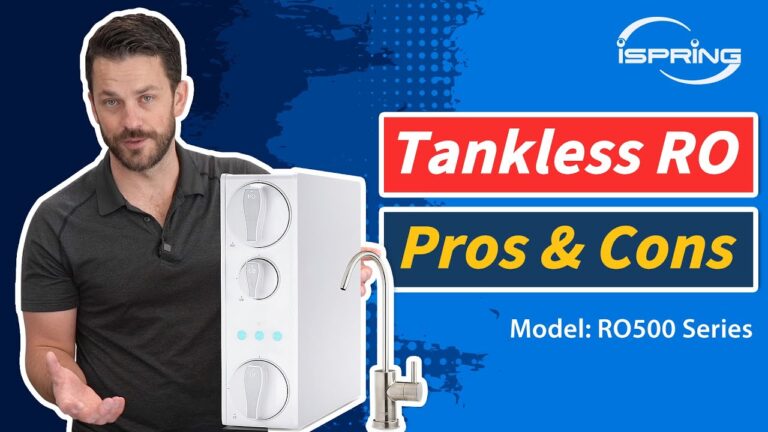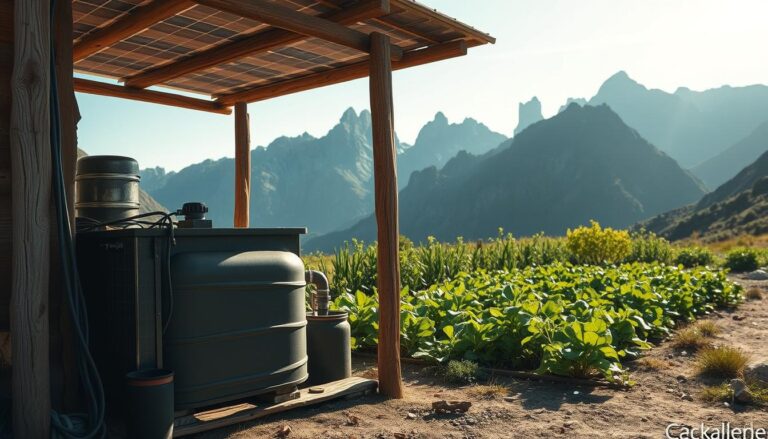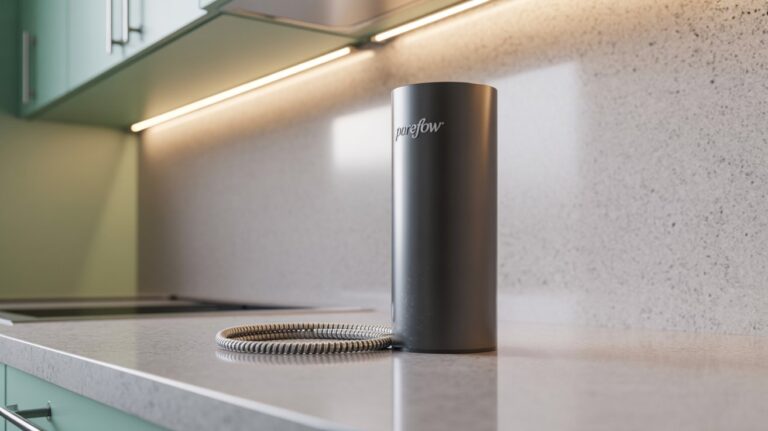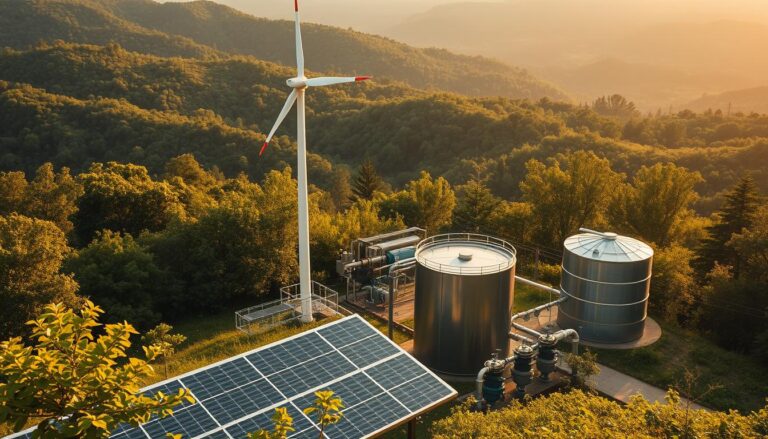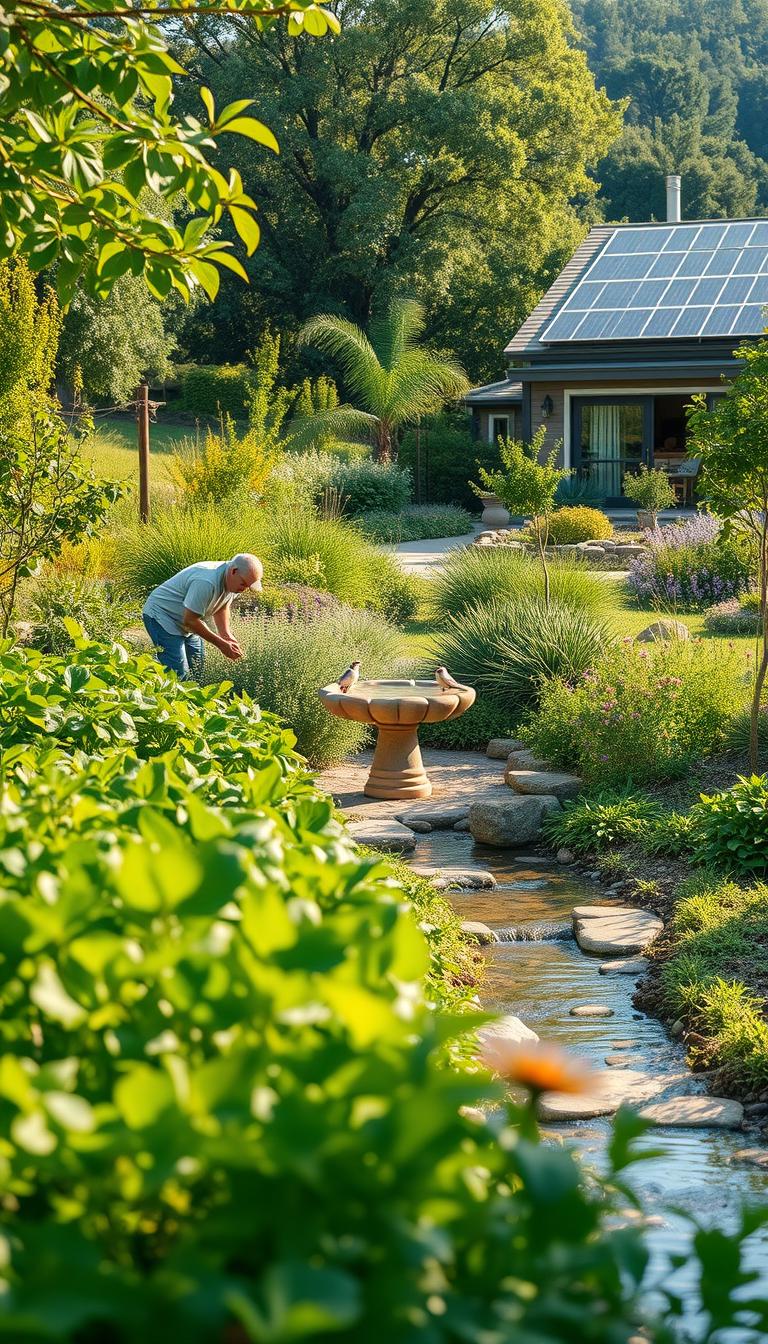6 Water-Saving Upgrades That Pay for Themselves
Are you aware of the simple changes you can make to your home to significantly reduce your water bills and enhance your property’s value? As a homeowner, you’re likely concerned about the environmental impact and the cost associated with maintaining your home.
Water conservation is not just an eco-friendly practice; it’s also a financially savvy decision. By implementing sustainable home upgrades, you can enjoy long-term savings and contribute to a more environmentally friendly future.
The good news is that you don’t need to break the bank to make a difference. Discover how six strategic upgrades can transform your home into a water-efficient haven, saving you money and boosting your home’s value.
Key Takeaways
- Reduce your water bills with simple home upgrades
- Enhance your home’s value with sustainable improvements
- Contribute to a more environmentally friendly future
- Enjoy long-term savings with water-efficient solutions
- Transform your home into a water-efficient haven
The Hidden Cost of Water Waste in American Homes
Many homeowners are unaware of the hidden costs associated with water waste. The average American household uses a significant amount of water daily, and inefficiencies can lead to substantial waste.
Average Water Usage Statistics
According to the EPA, the average American household uses over 80 gallons of water per person per day. This translates to a considerable amount of water waste when inefficiencies occur.
| Category | Average Daily Usage | Potential Savings |
|---|---|---|
| Showering | 20 gallons | Up to 5 gallons |
| Toilet Flushing | 18 gallons | Up to 4 gallons |
| Faucet Usage | 26 gallons | Up to 3 gallons |
Common Sources of Water Waste
Leaky faucets and toilets are among the most common sources of water waste in American homes. A single dripping faucet can waste up to 20 gallons of water per day, while a leaky toilet can waste hundreds of gallons.
By understanding these statistics and sources of waste, homeowners can take the first step towards reducing water usage and making environmentally conscious improvements.
Why Water Conservation Makes Financial Sense
As water costs continue to surge across the U.S., homeowners are beginning to realize the financial benefits of water conservation. The increasing cost of water is not just a matter of higher utility bills; it’s also a signal of the strain on our water resources.
Rising Water Costs Across the United States
Water costs are rising across the nation, with some cities experiencing increases of over 50% in the past decade. This trend is expected to continue as infrastructure ages and demand for water grows. By investing in water-saving technologies, homeowners can mitigate the impact of these rising costs. For instance, installing low-flow fixtures and appliances can significantly reduce water consumption, leading to lower utility bills.
Environmental Impact of Excessive Water Usage
Excessive water usage not only strains local water resources but also increases energy consumption for water treatment and heating. By conserving water, homeowners can reduce their environmental footprint and contribute to a more sustainable future. Eco-friendly renovations, such as installing rain sensors for irrigation systems, can be a cost-effective green solution that benefits both the homeowner and the environment.
How to Calculate the ROI of Water-Saving Upgrades
Calculating the return on investment (ROI) for water-saving upgrades is crucial for homeowners looking to reduce their water bills. This calculation helps determine how long it will take for the savings to equal the cost of the upgrade, a concept known as the payback period.
Understanding Payback Period
The payback period is a simple yet effective way to evaluate the financial viability of water-saving upgrades. It’s calculated by dividing the initial cost of the upgrade by the annual savings it generates. For instance, if a water-efficient appliance costs $500 and saves $100 per year, the payback period is five years. Understanding this concept is key to making informed decisions about home upgrades with a quick ROI.
Tools for Tracking Water Usage and Savings
To accurately calculate ROI, homeowners need to track their water usage and savings. Two effective tools for this purpose are smart water meters and mobile apps for water monitoring.
Smart Water Meters
Smart water meters provide real-time data on water consumption, helping homeowners identify areas of inefficiency. By installing a smart water meter, homeowners can monitor their water usage patterns and make adjustments to reduce waste.
Mobile Apps for Water Monitoring
Mobile apps can complement smart water meters by providing a user-friendly interface to track water usage and receive alerts about potential leaks or anomalies. These apps are particularly useful for monitoring reducing water usage over time and adjusting habits accordingly.
By understanding the payback period and utilizing tools like smart water meters and mobile apps, homeowners can make informed decisions about their water-saving upgrades and enjoy the benefits of energy-efficient appliances.
1. Low-Flow Showerheads: Small Investment, Big Returns
Installing a low-flow showerhead can significantly reduce your water consumption, leading to substantial savings over time. This simple upgrade is an effective way to conserve water without compromising on the quality of your shower experience.
Types of Water-Efficient Showerheads
There are several types of low-flow showerheads available, each offering unique benefits. The primary distinction lies in their flow characteristics.
Aerating vs. Laminar-Flow Options
Aerating showerheads mix air with water to create a satisfying shower experience while reducing water flow. Laminar-flow showerheads, on the other hand, provide a more traditional shower feel by maintaining a consistent water flow pattern.
WaterSense Certification Explained
The WaterSense label, backed by the EPA, signifies that a showerhead meets rigorous standards for water efficiency and performance. Choosing WaterSense-certified products ensures you’re getting a high-quality, water-saving showerhead.
Installation Process and Costs
Installing a low-flow showerhead is typically a straightforward DIY task that requires minimal tools. The cost can vary widely, from under $10 for basic models to over $50 for advanced showerheads with multiple settings.
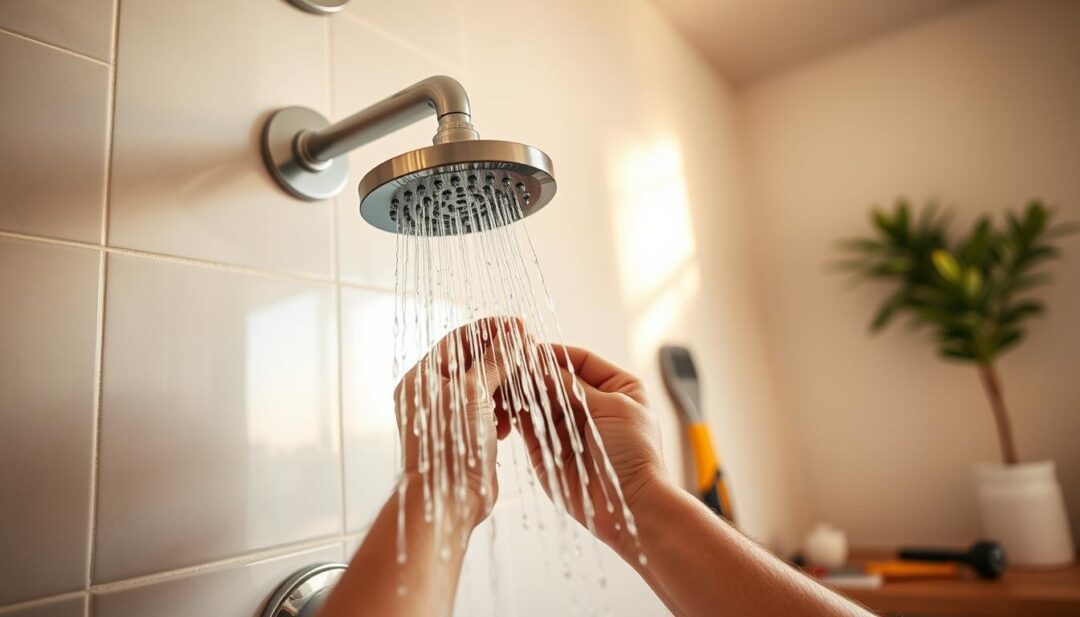
Expected Water Savings and Payback Timeline
Low-flow showerheads can save a significant amount of water, especially in households with multiple occupants. The payback period is usually short, often less than a year, due to the low initial investment and the continuous savings on water and energy bills.
- Average water savings: 2.5 gallons per minute
- Potential annual savings: $100-$200 per year for a family of four
- Payback period: Typically under 1 year
By making this simple upgrade, homeowners can enjoy a quick return on investment while contributing to water conservation efforts.
2. High-Efficiency Toilets: Flushing Away Less Money
Upgrading to a high-efficiency toilet is a simple yet impactful way to make your home more eco-friendly and cost-effective. High-efficiency toilets, especially dual-flush models, can significantly reduce water consumption. A family of four can save thousands of gallons per year, leading to lower water bills and a reduced environmental footprint.
Dual-Flush vs. Single-Flush Models
Dual-flush toilets offer two flush options: a full flush for solid waste and a reduced flush for liquid waste. This feature allows for more control over water usage. Single-flush models, while simpler, use the same amount of water for every flush. Dual-flush toilets are generally more effective for water conservation.
- Dual-flush toilets can save up to 1.6 gallons per flush.
- Single-flush models are often less expensive upfront.
- Dual-flush models provide more flexibility in water usage.
Installation Considerations
Installing a high-efficiency toilet requires consideration of several factors, including the existing plumbing infrastructure and the toilet’s compatibility with it. It’s also important to check local regulations and potential rebates for eco-friendly renovations.
Professional installation is recommended to ensure the toilet is properly fitted and functions correctly.
Water and Cost Savings Analysis
The water savings from high-efficiency toilets can be substantial. For example, a family of four can save thousands of gallons annually, translating into lower water bills.
Case Study: Family of Four Savings
A typical family of four using an old, inefficient toilet can waste over 10,000 gallons of water per year. Switching to a high-efficiency dual-flush toilet can cut this usage in half, saving around 5,000 gallons annually.
Comparing Old vs. New Technology
Old toilets use significantly more water per flush compared to new, high-efficiency models. The difference can be as much as 1.6 gallons per flush, leading to substantial savings over time.
By upgrading to a high-efficiency toilet, homeowners can enjoy both environmental benefits and cost savings, making it a smart choice for those looking to reduce their water footprint.
3. ENERGY STAR Certified Washing Machines
ENERGY STAR certified washing machines offer a compelling combination of efficiency and performance, making them an attractive option for environmentally conscious consumers.
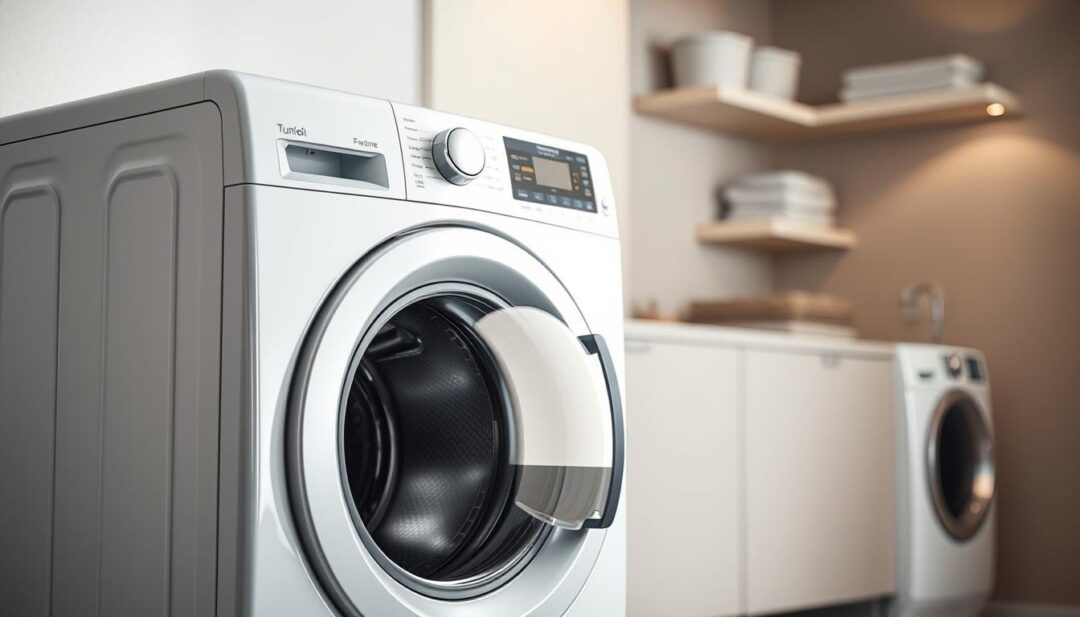
Top Features to Look For
When selecting an ENERGY STAR certified washing machine, there are several key features to consider. Look for models with advanced moisture-sensing technology, which can detect the moisture level in clothes and adjust the wash cycle accordingly, reducing unnecessary water usage. Additionally, consider machines with multiple cycle options, including eco-mode or water-saving settings, to further enhance efficiency.
High-efficiency (HE) washing machines are designed to use less water and energy than traditional models. They are a crucial component of sustainable home upgrades, contributing significantly to reducing water usage and energy consumption.
Initial Investment vs. Long-Term Savings
While ENERGY STAR certified washing machines may have a higher upfront cost, the long-term savings on utility bills can be substantial. These machines are designed to use significantly less water and energy, leading to reduced monthly expenses. For example, a study by the U.S. Environmental Protection Agency found that ENERGY STAR certified washing machines can save households up to $100 per year on energy bills.
To calculate the return on investment (ROI), homeowners should consider both the initial cost and the anticipated savings over time. By doing so, they can make an informed decision about whether upgrading to an ENERGY STAR certified washing machine is financially viable for their household.
Additional Energy Savings Benefits
Beyond water savings, ENERGY STAR certified washing machines also offer significant energy savings benefits. By using advanced technologies such as inverter-driven motors and optimized wash cycles, these machines can reduce energy consumption by up to 25% compared to standard models.
This not only contributes to a reduction in greenhouse gas emissions but also helps households lower their energy bills, making it a beneficial choice for both the environment and the homeowner’s wallet.
4. Smart Irrigation Systems for Outdoor Water Management
As water conservation becomes increasingly important, smart irrigation systems offer a cutting-edge solution for homeowners looking to reduce their water footprint. These systems utilize advanced technologies to optimize outdoor watering, ensuring that lawns and gardens receive the right amount of water at the right time.
Weather-Based Controllers and Soil Moisture Sensors
Smart irrigation systems often incorporate weather-based controllers that adjust watering schedules according to real-time weather data. Additionally, soil moisture sensors monitor the moisture levels in the soil, preventing unnecessary watering. This combination of technologies can lead to significant water savings, especially during dry seasons.
Installation and Setup Process
Installing a smart irrigation system involves several steps, including assessing your yard’s watering needs, selecting the appropriate components, and configuring the system. While some homeowners may opt for DIY installation, others may prefer to hire a professional to ensure optimal setup and operation.
Seasonal Water Savings and ROI
The water-saving potential of smart irrigation systems varies by season. During hot summer months, these systems can significantly reduce water waste by adjusting for rainfall and soil moisture levels. The return on investment (ROI) for smart irrigation systems is typically realized through lower water bills over time.
Summer vs. Winter Usage Patterns
In the summer, smart irrigation systems can lead to substantial water savings by optimizing watering schedules. In contrast, during the winter, these systems can minimize water usage by reducing or eliminating watering when it’s not needed.
Drought Adaptation Capabilities
One of the key benefits of smart irrigation systems is their ability to adapt to drought conditions. By continuously monitoring soil moisture and weather forecasts, these systems can adjust watering schedules to comply with water restrictions, ensuring compliance while maintaining landscape health.
5. Water-Efficient Dishwashers: Clean Dishes, Lower Bills
In the quest for cost-effective green solutions, water-efficient dishwashers stand out as a valuable upgrade. These appliances not only reduce water consumption but also lower energy bills, making them an attractive option for environmentally conscious households.
Key Efficiency Features to Consider
When selecting a water-efficient dishwasher, several features are worth considering. Look for models with the ENERGY STAR label, which indicates they meet energy efficiency standards set by the U.S. Environmental Protection Agency. Additionally, features like:
- Soil sensors that adjust water usage based on the load’s dirtiness
- Multiple wash cycles for different types of dishes
- Steam cleaning options for more efficient cleaning
can enhance both efficiency and performance.
Cost Comparison with Hand Washing
While the initial cost of a water-efficient dishwasher might seem high, it’s essential to compare it with the long-term costs of hand washing. Hand washing can consume more water, especially if you’re washing a large number of dishes. A water-efficient dishwasher, on the other hand, uses a controlled amount of water per cycle. Studies have shown that using a dishwasher can save both water and energy compared to hand washing, especially when the dishwasher is fully loaded.
Combined Water and Energy Savings
Water-efficient dishwashers offer dual benefits by saving both water and energy. By using less hot water and optimizing the wash cycle, these dishwashers reduce the energy required to heat water. This combined savings can lead to significant reductions in utility bills over time. For instance, a household switching to a water-efficient dishwasher might see a noticeable decrease in their monthly water and energy bills.
By investing in a water-efficient dishwasher, households can enjoy cleaner dishes while contributing to a more sustainable future. This upgrade not only benefits the environment but also offers a practical solution for reducing household expenses.
6. Water-Saving Upgrades That Pay for Themselves: Faucet Aerators
One of the most straightforward water-saving upgrades you can make is installing faucet aerators. These devices mix water with air, reducing the flow rate while maintaining the feeling of a strong flow. This simple technology can lead to significant water savings over time.
Types and Flow Rates
Faucet aerators come in various types and flow rates, typically measured in gallons per minute (GPM). Standard flow rates range from 0.5 to 2.5 GPM. Choosing the right flow rate depends on the faucet’s intended use and local water regulations.
DIY Installation Guide
Installing faucet aerators is a straightforward DIY project. Simply unscrew the existing aerator from the faucet, clean the threads, and screw on the new aerator. Most aerators come with a simple twist-on design.
Immediate and Long-Term Savings
Faucet aerators offer both immediate and long-term savings. By reducing water flow, they lower your water bill. According to the EPA, installing aerators can save up to 60% of water usage.
Kitchen vs. Bathroom Applications
In the kitchen, aerators help reduce water waste while washing dishes. In bathrooms, they conserve water during handwashing. Both applications contribute to overall water savings.
Combining with Touchless Technology
Combining faucet aerators with touchless technology can further enhance water savings. Touchless faucets automatically turn off when not in use, and when paired with aerators, they maximize efficiency.
“Faucet aerators are a cost-effective way to reduce water consumption without sacrificing performance.” – A statement that resonates with the growing trend of eco-friendly renovations.
Combining Upgrades: Maximizing Your Water Savings
To maximize water savings, it’s essential to consider a comprehensive approach that involves multiple upgrades. By combining several water-saving measures, homeowners can significantly reduce their water consumption and lower their utility bills.
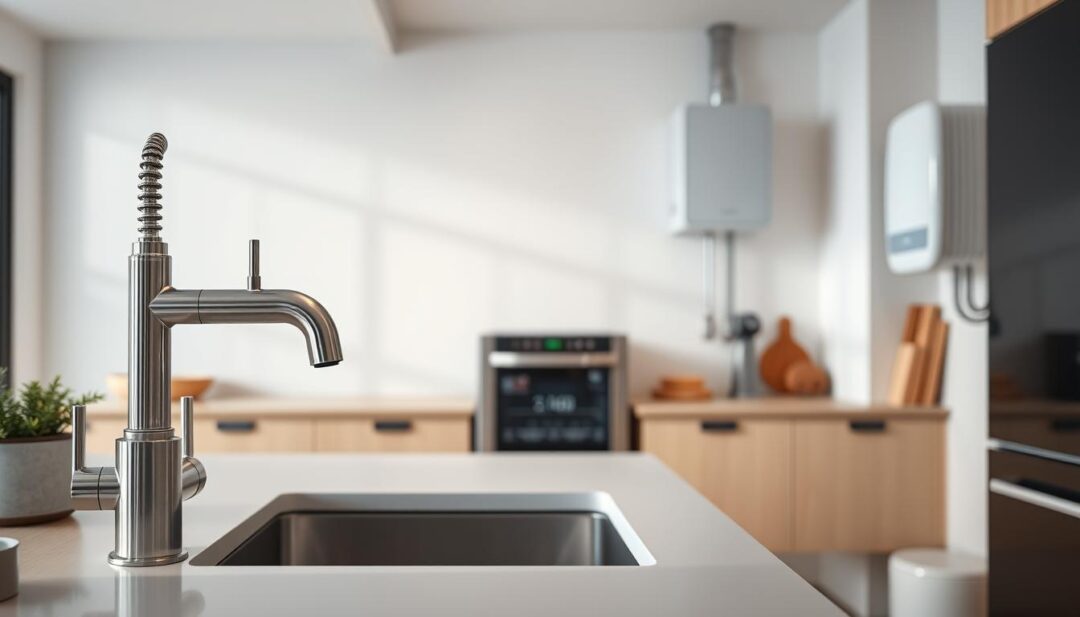
Strategic Implementation Timeline
Creating a strategic implementation timeline is crucial for maximizing the return on investment (ROI) of water-saving upgrades. Start by identifying the most critical upgrades that will yield the greatest water savings. Prioritize upgrades based on factors such as cost, complexity, and potential impact on water consumption. For instance, installing low-flow showerheads and faucet aerators can be done simultaneously, while more significant upgrades like high-efficiency toilets or smart irrigation systems may require separate phases.
By staggering upgrades over time, homeowners can manage costs and minimize disruptions to their daily routines.
Compounding ROI Effects
The compounding ROI effects of combining water-saving upgrades can be substantial. As multiple upgrades work together to reduce water consumption, the cumulative savings can lead to a significant reduction in utility bills. For example, combining low-flow showerheads, faucet aerators, and high-efficiency toilets can result in a considerable decrease in water usage, leading to lower water and energy bills.
By adopting a comprehensive approach to water-saving upgrades, homeowners can enjoy the benefits of reduced water consumption, lower utility bills, and a more sustainable living environment.
Available Rebates and Incentives for Water-Saving Upgrades
Homeowners looking to implement water-saving upgrades can benefit from various rebates and incentives offered by government programs. These incentives can significantly reduce the initial costs associated with eco-friendly renovations, making cost-effective green solutions more accessible.
Federal Tax Credits and Incentives
The federal government offers tax credits for homeowners who install water-saving upgrades. For instance, the installation of high-efficiency toilets and showerheads may qualify for tax credits. Homeowners should consult the IRS website for the most current information on eligible upgrades and the application process.
State and Local Rebate Programs
In addition to federal incentives, many states and local governments offer rebate programs for water-saving upgrades. These programs vary widely, with some offering rebates for rain barrel installations, while others provide incentives for upgrading to low-flow fixtures. Homeowners should check with their local water utility or government website to explore available programs and eligibility criteria.
Maintenance Tips to Ensure Long-Term Savings
To maximize the benefits of water-saving upgrades, regular maintenance is crucial. This ensures that these devices continue to function efficiently, saving you money on your water bills.
Regular Inspection Schedule
Regular inspections are vital for identifying potential issues before they become major problems. It’s recommended to inspect your water-saving devices every 6 months. Check for signs of wear and tear, mineral buildup, or any other factors that could affect their performance.
| Device | Inspection Frequency | Common Issues |
|---|---|---|
| Low-Flow Showerheads | Every 6 months | Mineral buildup, Clogging |
| High-Efficiency Toilets | Every 12 months | Leaks, Flapper issues |
When to Upgrade vs. Repair
Knowing when to repair or upgrade your water-saving devices is crucial for maintaining their efficiency. If a device is old or requires frequent repairs, it might be more cost-effective to upgrade to a newer model.
Conclusion
By incorporating the 6 water-saving upgrades that pay for themselves, homeowners can significantly reduce their water bills while contributing to a more sustainable environment. Water conservation is crucial in today’s world, and making sustainable home upgrades is a step in the right direction.
The upgrades discussed, including low-flow showerheads, high-efficiency toilets, ENERGY STAR certified washing machines, smart irrigation systems, water-efficient dishwashers, and faucet aerators, offer a range of benefits. Not only do they reduce water consumption, but they also provide significant financial savings over time.
Homeowners can maximize their water savings by combining these upgrades and taking advantage of available rebates and incentives. Regular maintenance is also essential to ensure the longevity and effectiveness of these upgrades.
By adopting these water-saving measures, individuals can enjoy a more sustainable lifestyle while reducing their environmental footprint. The financial benefits of water conservation are clear, making it a worthwhile investment for homeowners.
Start making a positive impact on the environment and your wallet by implementing these 6 water-saving upgrades that pay for themselves. With the potential for significant savings and a more sustainable future, it’s a change worth considering.


